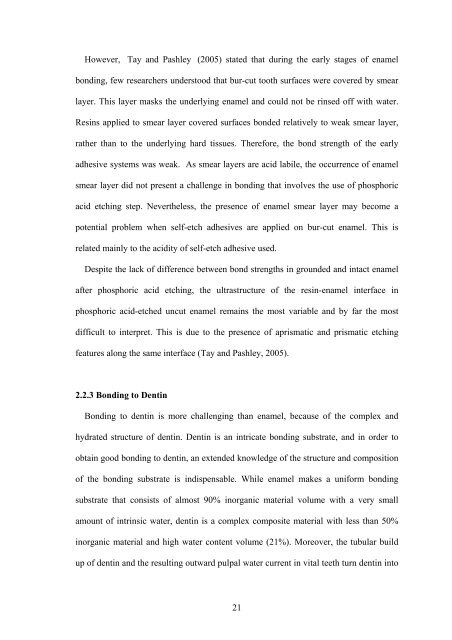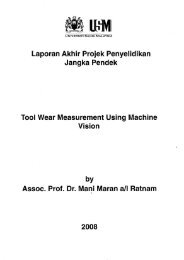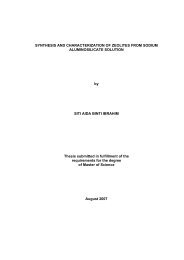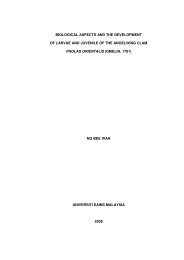microleakage in class ii composite restorations ... - ePrints@USM
microleakage in class ii composite restorations ... - ePrints@USM
microleakage in class ii composite restorations ... - ePrints@USM
Create successful ePaper yourself
Turn your PDF publications into a flip-book with our unique Google optimized e-Paper software.
However, (Tay and Pashley, (2005) stated that dur<strong>in</strong>g the early stages of enamelbond<strong>in</strong>g, few researchers understood that bur-cut tooth surfaces were covered by smearlayer. This layer masks the underly<strong>in</strong>g enamel and could not be r<strong>in</strong>sed off with water.Res<strong>in</strong>s applied to smear layer covered surfaces bonded relatively to weak smear layer,rather than to the underly<strong>in</strong>g hard tissues. Therefore, the bond strength of the earlyadhesive systems was weak. As smear layers are acid labile, the occurrence of enamelsmear layer did not present a challenge <strong>in</strong> bond<strong>in</strong>g that <strong>in</strong>volves the use of phosphoricacid etch<strong>in</strong>g step. Nevertheless, the presence of enamel smear layer may become apotential problem when self-etch adhesives are applied on bur-cut enamel. This isrelated ma<strong>in</strong>ly to the acidity of self-etch adhesive used.Despite the lack of difference between bond strengths <strong>in</strong> grounded and <strong>in</strong>tact enamelafter phosphoric acid etch<strong>in</strong>g, the ultrastructure of the res<strong>in</strong>-enamel <strong>in</strong>terface <strong>in</strong>phosphoric acid-etched uncut enamel rema<strong>in</strong>s the most variable and by far the mostdifficult to <strong>in</strong>terpret. This is due to the presence of aprismatic and prismatic etch<strong>in</strong>gfeatures along the same <strong>in</strong>terface (Tay and Pashley, 2005).2.2.3 Bond<strong>in</strong>g to Dent<strong>in</strong>Bond<strong>in</strong>g to dent<strong>in</strong> is more challeng<strong>in</strong>g than enamel, because of the complex andhydrated structure of dent<strong>in</strong>. Dent<strong>in</strong> is an <strong>in</strong>tricate bond<strong>in</strong>g substrate, and <strong>in</strong> order toobta<strong>in</strong> good bond<strong>in</strong>g to dent<strong>in</strong>, an extended knowledge of the structure and compositionof the bond<strong>in</strong>g substrate is <strong>in</strong>dispensable. While enamel makes a uniform bond<strong>in</strong>gsubstrate that consists of almost 90% <strong>in</strong>organic material volume with a very smallamount of <strong>in</strong>tr<strong>in</strong>sic water, dent<strong>in</strong> is a complex <strong>composite</strong> material with less than 50%<strong>in</strong>organic material and high water content volume (21%). Moreover, the tubular buildup of dent<strong>in</strong> and the result<strong>in</strong>g outward pulpal water current <strong>in</strong> vital teeth turn dent<strong>in</strong> <strong>in</strong>to21
















